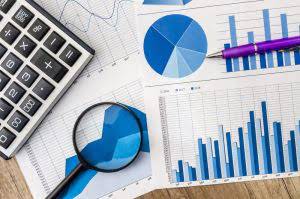
Keeping track of your financial data daily and ensuring its accuracy enables you to make immediate, data-driven decisions for your restaurant group. A modern restaurant accounting system can automatically collect and accurately organize financial data and transactions. This removes the time, effort, and many of the errors in the accounting process. The challenge is finding an accounting system that efficiently manages a restaurant group’s finances based on the company’s accounting periods and corresponding budgets.
- As with any business decision, weighing up the pros and cons is crucial, as outsourcing can be costly.
- We’re firm believers in the Golden Rule, which is why editorial opinions are ours alone and have not been previously reviewed, approved, or endorsed by included advertisers.
- At a more granular level, accounting involves summarizing, analyzing, and reporting transactions to oversight agencies, regulators, and tax collection entities.
- These types of insights into your operations are only available using modern restaurant accounting tools.
Reporting by calendar month does not provide an apples-to-apples comparison because of the uneven number of weekend days in each month. Consequently, the optimal solution for restaurants is to set up reporting using 13 accounting periods of four weeks per year, or 4/4/5 accounting periods. The 4/4/5 calendar divides a year into four quarters of 13 weeks grouped into two 4-week months and one 5-week https://www.bookstime.com/articles/small-businesses-bookkeeping month. The success of your restaurant depends on many factors, including of course, sales. But your costs relative to sales are the most clear indication of the fundamental financial health of your restaurant business, so you’ll need to start with an accurate recording of your expenses. A profit and loss (P&L) statement is a summary of the costs, revenues, and expenses over a specific period.
Download our free inventory template
It’s also extremely easy to use for owners with no accounting or bookkeeping experience. We chose Restaurant365 as our best overall accounting software for restaurants because of its robust features, ease of use, and full integration with other systems. It’s made specifically for the restaurant industry and has specific features beneficial to restaurant owners.
- In that situation, if your gross profit fell by only 2%, it would cut £20,000 off your profit.
- When you do that, the credit card company starts the process of transferring that money to your bank account.
- As previously stated, CoGS is the combined costs of food and beverage ingredients that were sold at your restaurant over a certain period of time.
- Every employee has a record of their pay, which is included in year-end reports and other financial statements.
- Typical accounting methods have not been able to cope with the fast-changing demands of the restaurant business.
QuickBooks has the reports you need to quickly make smart decisions for your restaurant. Sync your restaurant accounting software with apps that organize sales, employees, and back of house with less manual data entry. For restaurants to be profitable, most business operators look for the food costs to be between 28 and 35 percent of the how to do bookkeeping for a restaurant revenue. While no defined average food cost percentage is defined, this range has been a well-known standard for US-based food operators. Restaurants with less than $1 million in profits can choose between cash or accrual accounting. Restaurants with profits over $1 million should rely on the accrual method for accuracy and insight.